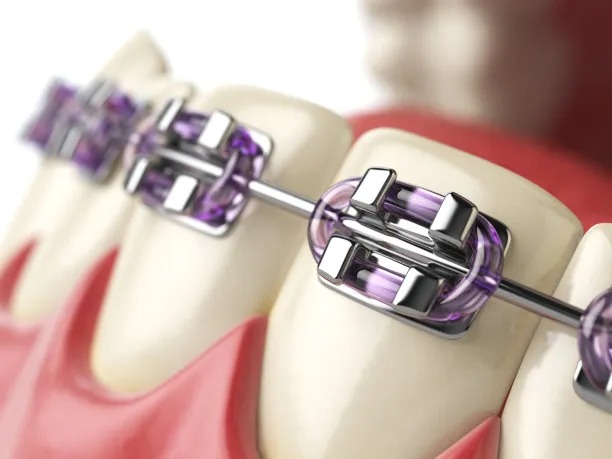The Essential Guide to Extracting a Tooth Understanding the Process and Aftercare for a Smooth Recovery
Summary: Extracting a tooth can be a daunting process for many, but understanding the methodology and aftercare can greatly enhance recovery and comfort. This essential guide details the steps involved in tooth extraction, from initial consultation through post-operative care. By breaking down the key phases of the extraction process, including preparation, extraction procedure, and aftercare, patients can approach the experience with knowledge and confidence. Special emphasis is placed on both common and rare complications, equipping readers with the information needed to ensure a smooth recovery. Ultimately, being well-informed can ease anxiety and foster a successful healing journey.
1. Preparation Before Tooth Extraction

Before a tooth extraction, proper preparation is crucial for ensuring a smooth, efficient procedure. Initially, it is important to consult with your dentist or oral surgeon, who will assess your specific dental issues and recommend whether extraction is the best course of action. They will review your medical history, discuss current medications, and evaluate the condition of the tooth. This thorough assessment helps in determining the appropriate anesthesia and potential complications.
Additionally, patients should abide by specific pre-operative instructions. These may include dietary restrictions, particularly on the day of the extraction, such as avoiding food or drink prior to anesthesia. Understanding these guidelines is essential for minimizing risks, ensuring safety, and facilitating a seamless process. It is also advisable to arrange for transportation post-extraction, especially if sedative anesthesia is used.
Finally, mentally preparing for the procedure is equally important. Knowing what to expect can help alleviate anxiety. Engaging in relaxation techniques or discussing fears with your dentist can make a significant difference. Remember, understanding the procedure contributes to a lesser emotional burden and a smoother overall experience.
2. The Tooth Extraction Procedure Explained
The extraction procedure itself can vary based on the complexity of the tooth being removed. Most commonly, tooth extractions fall into two categories: simple extractions and surgical extractions. Simple extractions involve teeth that are visible above the gum line, while surgical extractions are employed for more complicated cases, such as impacted teeth that cannot be easily accessed.
During a simple extraction, the dentist administers local anesthesia to numb the area. Once numb, the dentist uses specialized tools to loosen the tooth and carefully remove it from its socket. For a surgical extraction, the dentist makes an incision into the gums to access the tooth, which may require additional steps such as bone removal or breaking the tooth into fragments for easier extraction.
Post-extraction, patients may experience some discomfort, swelling, and bleeding. Your dentist will provide immediate care, including gauze to help control bleeding, and pain management options to alleviate discomfort. Its essential to follow the dentist’s guidance during this phase to ensure a successful outcome.
3. Important Aftercare Steps for Recovery
After a tooth extraction, proper aftercare is essential to promote healing and minimize complications. Immediately following the procedure, patients should bite down on gauze packs for about 30-45 minutes to encourage clot formation and stop bleeding. Its important to monitor the mouth for excessive bleeding; if uncontrolled bleeding occurs, patients should contact their dentist.
Next, managing swelling and pain is vital. Applying a cold compress to the outer cheek can help reduce swelling, while prescribed pain relief medications can alleviate discomfort. It is crucial to rest and avoid strenuous activities for the first 24-48 hours, allowing the body to focus its energy on healing.
Dietary adjustments are another crucial component of aftercare. Patients should stick to soft foods and avoid hot, spicy, or hard items for the first few days to prevent irritation to the extraction site. Maintaining hydration is also key; however, it is advisable to refrain from using straws, as the suction can dislodge the blood clot, leading to dry socket, which can hinder recovery.
4. Recognizing Complications and When to Seek Help
While most tooth extractions proceed without issues, it is imperative to be vigilant for potential complications. The most common issue is dry socket, occurring when the blood clot at the extraction site dislodges or dissolves, exposing the underlying bone. Symptoms include severe pain radiating from the extraction site, particularly days after the procedure.
Infections may also develop if bacteria infiltrate the extraction site. Signs of infection include fever, swelling, increased pain, and pus discharge. Should any of these symptoms arise, it is essential to seek immediate medical attention, as prompt treatment can mitigate further health issues.
Finally, some individuals may experience prolonged bleeding or unusual swelling that does not subside. These signs warrant a phone call to your dentist for further evaluation. Your dental care provider will help manage complications effectively, ensuring a full recovery.
Summary:
Understanding the comprehensive process of tooth extraction, from preparation to aftercare, can significantly enhance patient comfort and recovery. By following the outlined guidelines, individuals can navigate this dental challenge with confidence while recognizing potential complications early on. Ensuring consistent communication with your dental care provider is crucial for maintaining overall oral health and remedying any concerns.
This article is compiled by Vickong Dental and the content is for reference only.



